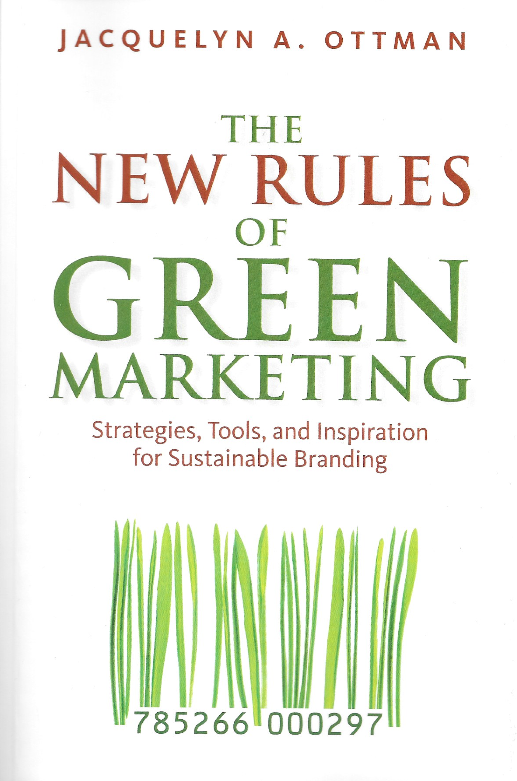The one sentence summary
Green consumers are now mainstream and there are many strategies and tools for successful, sustainable branding.
WHAT THE BOOK SAYS

- Green is now mainstream and cool. Greener products work equally or better and are often worth a premium price. Green inspires products and services that can result in better consumer value, enhanced brands and a stronger company.
- Manufacturer and retailer reputation count more than ever. Businesses are their philosophies.Sustainability represents an important consumer need, and is now an integral aspect of product quality. The brands consumers buy and trust today educate and engage them in meaningful conversation through a variety of media.
- Green consumers are strongly influenced by the recommendations of friends, family, and trusted third parties. They trust brands that tell all, and they don’t expect perfection.
- Environmentalists are no longer the enemy – nearly everyone is a corporate stakeholder. Keep it simple and authentic.
- Every generation is green in its own way. Baby boomers included the first activists, Gen X saw a range of environmental disasters on the TV, Gen Y had digital media at their command, and for Gen Z, green is a natural part of their lives.
- There are five shades of green consumers:
1. LOHAs (Lifestyles Of Health And Sustainability) – the most conscious.
2. Naturalites – see themselves as dedicated but purchasing patterns don’t always reflect that.
3. Drifters – driven by trends more than deeply held beliefs.
4. Conventionals – naturally frugal old school, as in put on a jumper not the heating.
5. Unconcerneds – not too bothered, or can’t afford it.
- The new green marketing paradigm involves shifting from conventional marketing approach in the following ways:
- Move from consumers with lifestyles to people with lives.
- Move from cradle to grave products to cradle to cradle; from products to services; from globally to locally sourced; from one size fits all to regionally tailored.
- Move from marketing products and end benefits to values; from selling to educating and empowering; from one-way communication to creating community; from paid advertising to word of mouth.
- Move corporate approaches from secretive to transparent; reactive to proactive; independent and autonomous to interdependent and allied with stakeholders; from competitive to cooperative; departmentalised to holistic; short to long term; profit maximizing to triple bottom line.
WHAT’S GOOD ABOUT IT
- Strategies for green marketing:
1. Understand the deeply held beliefs of consumers and stakeholders and align with them.
2. Create new products and services that balance customer need with minimal adverse impact.
3. Offer practical benefits whilst empowering and engaging consumers.
4. Establish credibility by communicating corporate commitment and complete transparency.
5. Be proactive and go beyond what is expected.
6. Think holistically and underscore community and stakeholders.
7. Don’t quit. Continuously strive for zero impact and promote responsible use at all times.
- Strategies for suitable product design:
Sustainable harvesting and mining practices, recycled content, reduce sources, organically grown, fair trade, reduce toxicity, think global, grow local, responsible manufacturing process, energy, fuel and water efficient, extend product life, reusable, refillable, compostable, safe for disposal.
- Strategies for establishing credibility for sustainable branding and marketing:
Walk your talk, be transparent, don’t mislead, enlist the support of third parties, promote responsible consumption.
WHAT YOU HAVE TO WATCH
- The book was produced in 2011 and this is a very fast moving field. Most of the principles still hold true, but the distinction between ‘green’ and ‘sustainable’ has since become much more specific.
